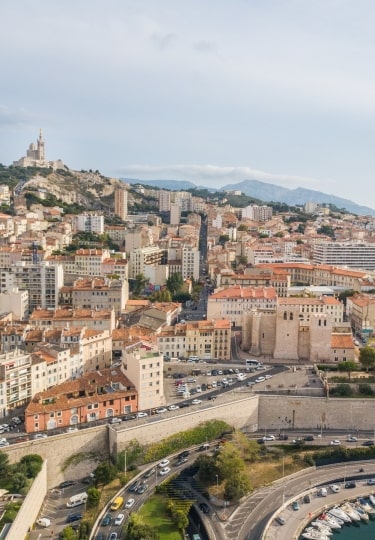Many of the best things to do in Marseille are—suitably for an ancient port city—grouped around the Vieux Port (Old Harbor).
With such an abundance of history, it’s little surprise that the oldest city in France offers a generous dose of local color. The country’s national anthem is named for the city’s rebels who marched against the capital during The Revolution. In the late 20th century, it was the inspiration for the classic crime flick “The French Connection” and home to real-life gangsters with names like “The Big Blond”.
Thankfully, in 2013, France’s second-largest city had a makeover. The streets were cleaned up—both literally and figuratively—and Marseille has been transformed through enormous investment. Part of this sparkling regeneration was the creation of the Museum of European and Mediterranean Civilizations (MuCEM), while the Vieux Port hasn’t looked this fresh since the ancient Greeks first arrived in 600 BC.
Here are the best of Marseille’s attractions to seek out.
1: Explore MuCEM
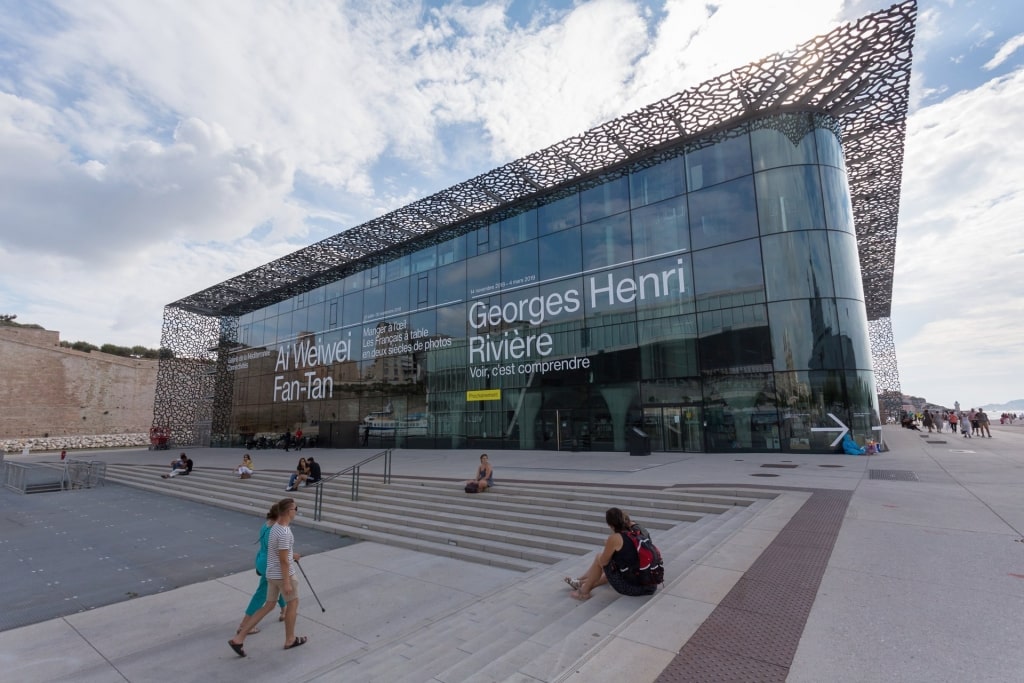
Museum of the Civilizations of Europe and the Mediterranean
Completed for the city’s 2013 turn as EU Capital of Culture, the Museum of the Civilizations of Europe and the Mediterranean (MuCEM) is an eye-catching cultural treasure intended to reflect the city’s melting pot, both past and present.
Symbolically connected by a black metal footbridge to the 17th century Fort St. Jean, MuCEM’s modern juxtaposition with this historic fort at the mouth of the Vieux Port is striking. Designed by architects Rudy Ricciotti and Roland Carta, the museum’s main box-shaped D4 building is draped in a metal shroud. It’s intended to be reminiscent of a fishing net—an homage to the city’s totemic industry.
The net houses an anthropological exploration of the Mediterranean’s history and cultures through semi-permanent exhibitions, films, and lectures. As you’d imagine, it’s an ambitious and sprawling remit. Graffiti rubs up against video installations and the eclectic objects on display, such as Mermaid Bread or the tarot set consulted by Napoleon Bonaparte.
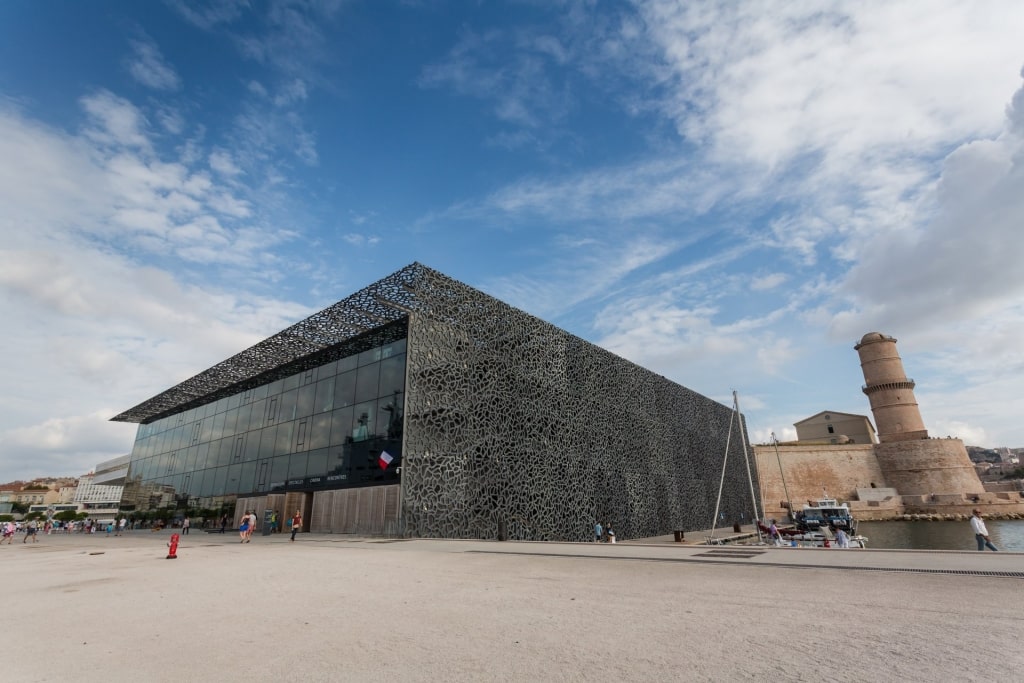
Museum of the Civilizations of Europe and the Mediterranean
Once you’ve finished absorbing the fascinating contents, head up to the rooftop gardens for stunning views over the city and the azure Mediterranean Sea. Alternatively, join the Marseillaise relaxing or having their wedding photos taken amid the adjacent atmospheric fortifications. If you’ve worked up an appetite, MuCEM’s Le Môle Passedat restaurant overseen by Michelin-starred Chef Gérald Passédat is certainly worth your attention.
2: Visit Notre Dame de la Garde Basilica
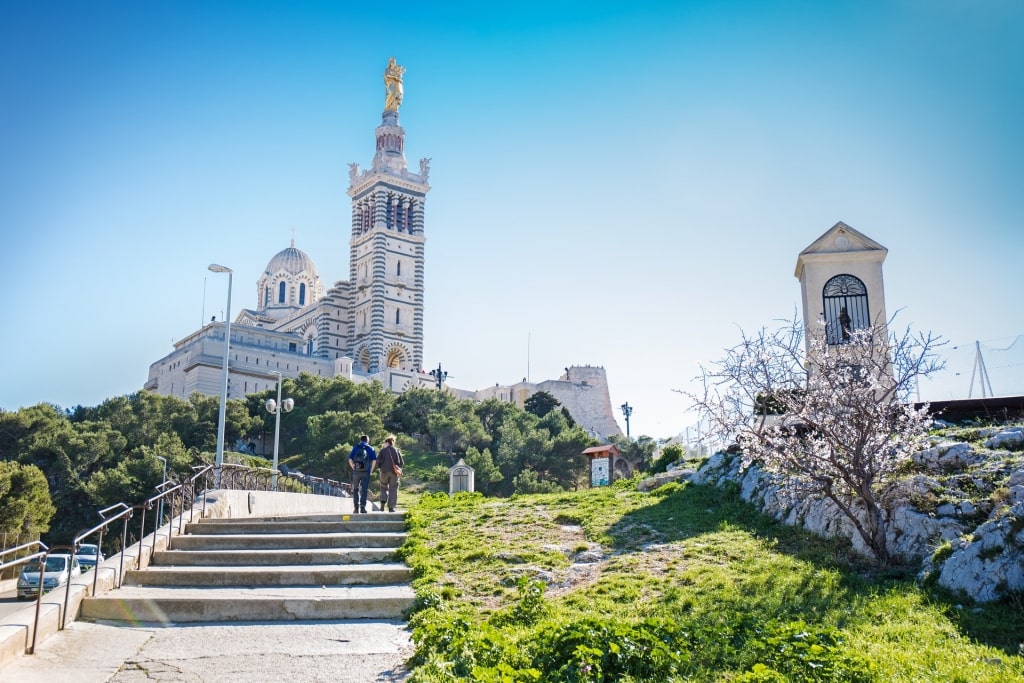
Notre Dame de la Garde Basilica
Trumping MuCEM as the city’s most visible attraction, the Notre Dame de la Garde Basilica sits on the city’s highest point. Visiting the basilica and looking back at the city spread out below is one of the essential things to do in Marseille.
The holy site is crowned with a gleaming, nearly ten-meter-tall statue of ‘The Good Mother’. The statue acts like a lighthouse of spiritual goodwill for the city and its seafaring citizens.
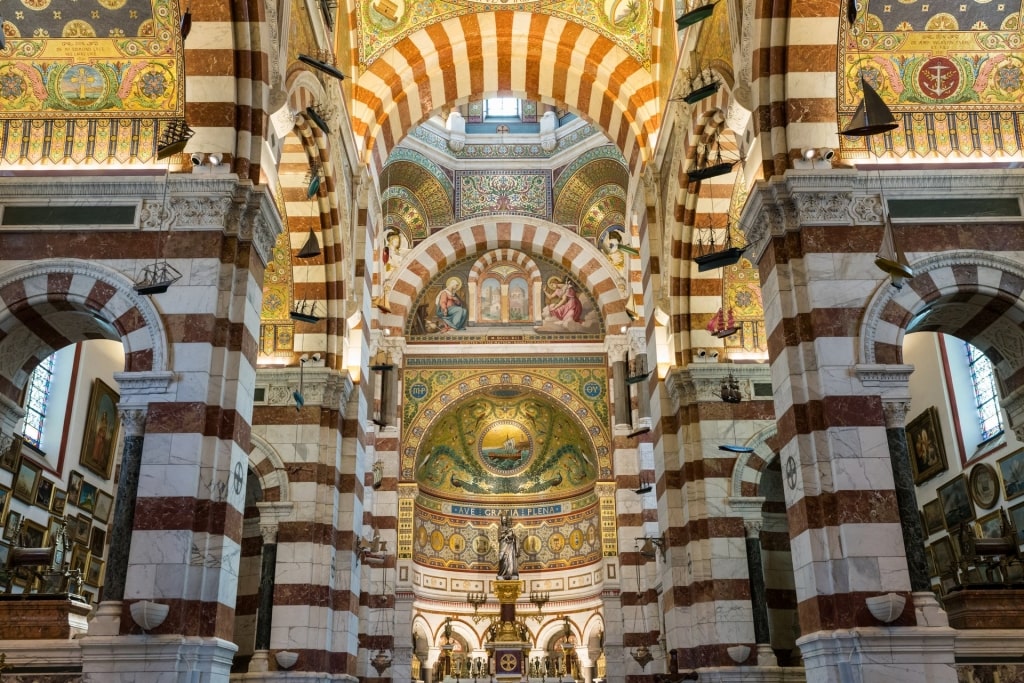
Notre Dame de la Garde Basilica
Inside this 19th-century basilica’s pale walls, you’ll find this idea beautifully rendered amid the marble mosaic imagery and murals that light up its Romano-Byzantine interior. The history of this structure runs deeper than the 1850s, however, as the Notre Dame de la Garde is built atop the foundations of a 16th-century fort.
At night, this emblem of the city is lit up like a beacon. It makes for a handsome focal point while sipping an apéro amid the soft sea breezes.
3: Marvel At Marseille Cathedral
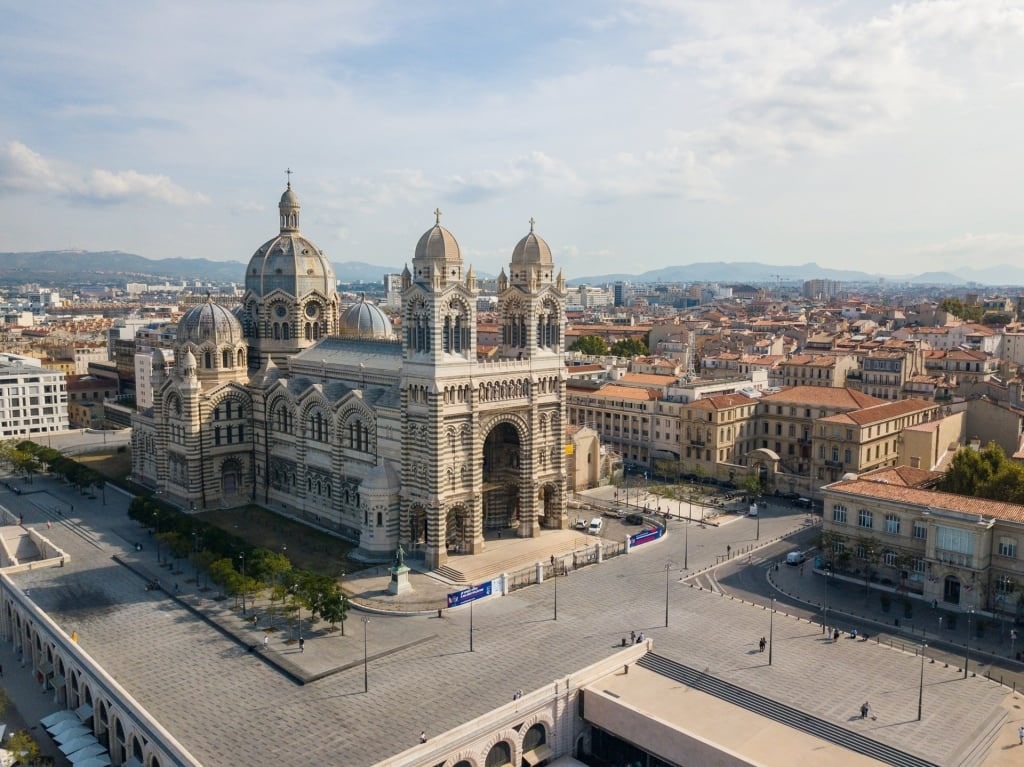
Marseille Cathedral
Vying with MuCEM as the most striking of Marseille’s attractions along the seafront is Marseille Cathedral, or—to give it its official name—the ‘Cathedral of Sainte-Marie-Majeure’.
Marseille is famous for this distinctive architecture—a stately pile of dramatic towers and domes striped in local Cassis stone and dark green Florentine marble. When it was built in the latter half of the 19th century, the ‘New Major’s’ blend of Roman and Oriental design was intended to signal the city’s significance as France’s first port and as the West’s gateway into the East. One of the country’s largest cathedrals—it took over 40 years to build—the New Major has dimensions close to St. Peter’s Basilica in Rome and can hold up to 3,000 congregants.
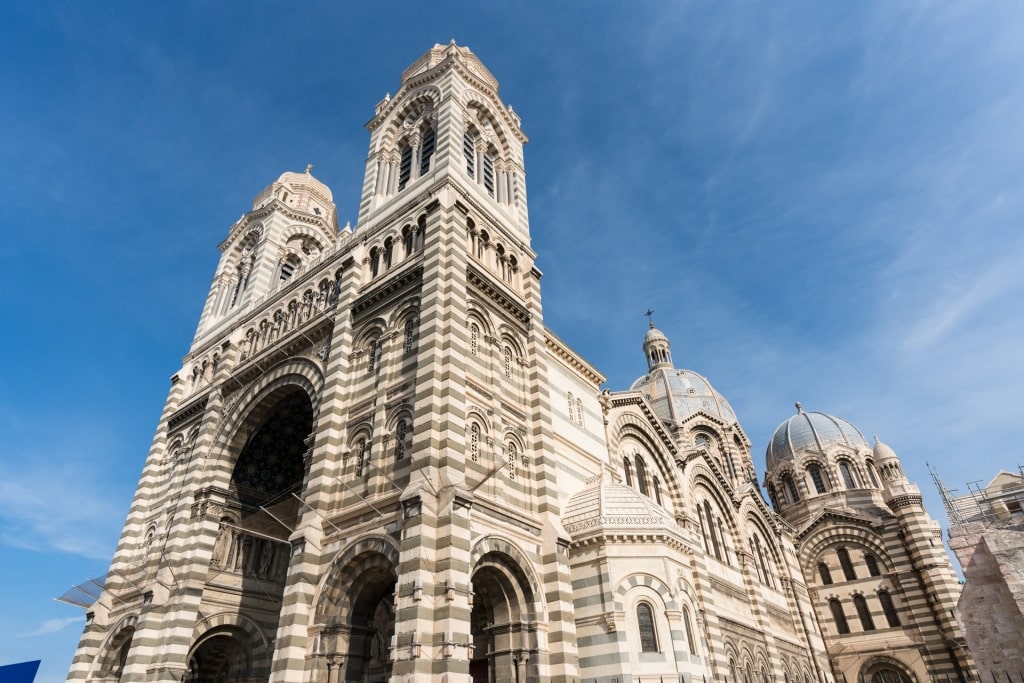
Marseille Cathedral
After you’ve visited its opulent side chapels and craned your neck to inspect its lofty ceiling, find the vaulted warehouses beneath. These have been converted into a hip row of restaurants ranging from casual bites to fine dining.
4: Get Into The Rhythms Of The Vieux Port
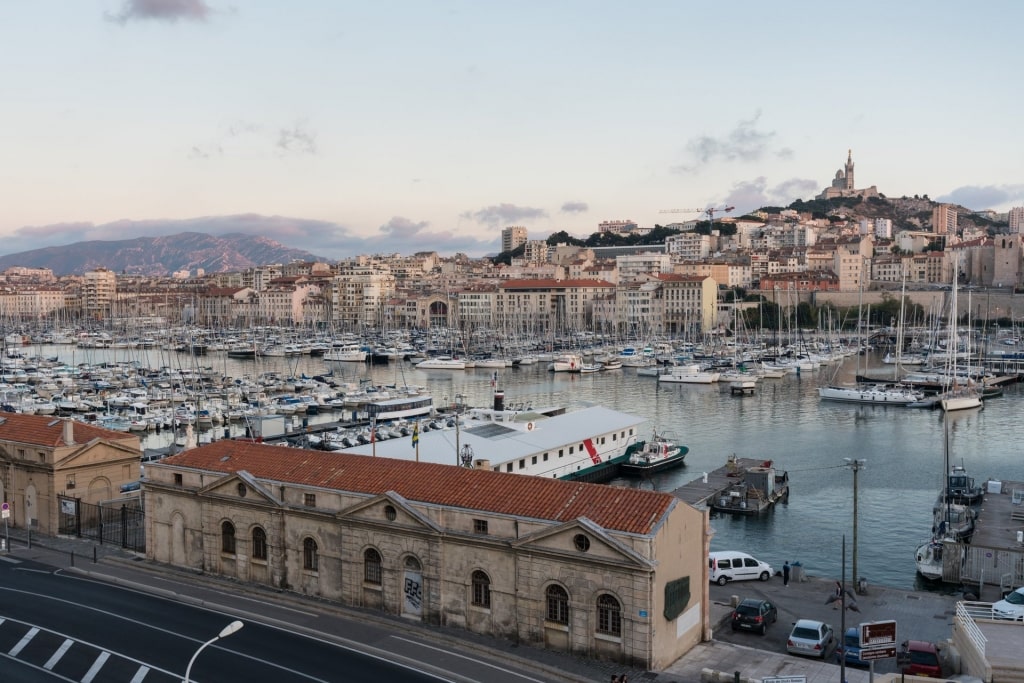
Vieux Port
The Vieux Port, or Old Harbor, is the city’s buzzing heart where the music of the mandolin buskers mingles with the clatter and shouts of unloading fishing vessels. Marseille’s history is spectacularly on show here at what was its key commercial hub for over a millennium.
The star-shaped fortress of St. Nicholas guards what was the departure point for the Crusades, while the harborside Hôtel de Ville was rebuilt several times in the 17th century as the famously quarrelsome Marseillaise clashed with Louis XIV over its design.
The Vieux Port today is home to sleek yachts and only the occasional fishing vessel. An essential thing to do in Marseille is to stroll the glittering waterside, soaking up the history and the new developments. Browse the fresh fish being sold from makeshift stalls along the Quai des Belges, or wander beneath modern additions like Norman Foster’s mirror-like ‘shade house’ sculpture.
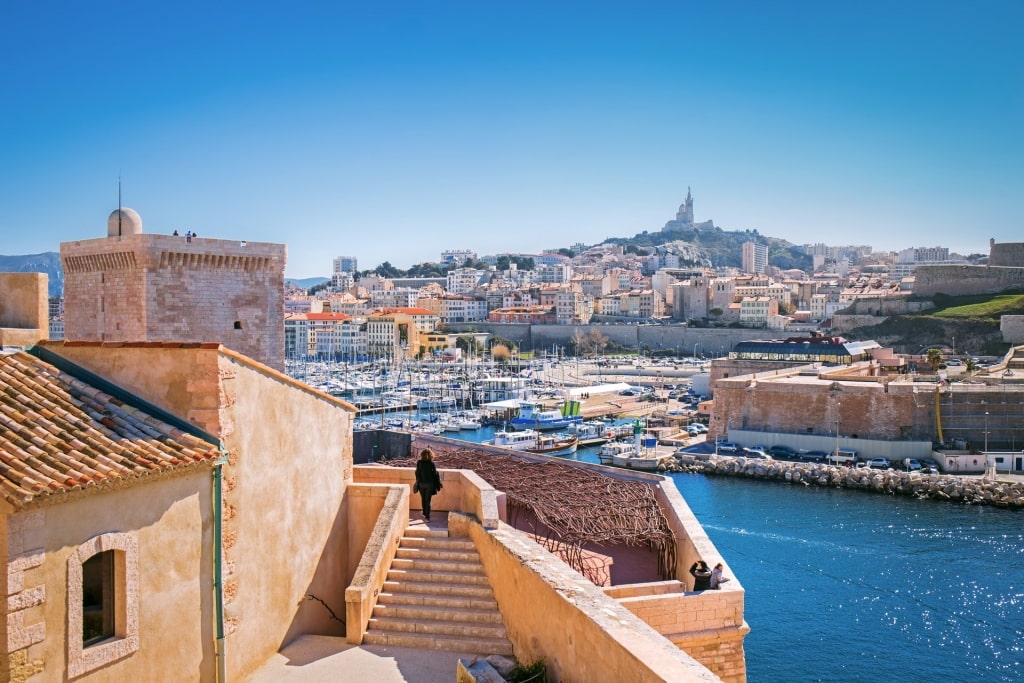
Vieux Port
In the evening, as the cafes and restaurants that line the Vieux Port set out their seats, the city comes together by the quayside. Have a pre-prandial drink while enjoying regional snacks like zingy grilled sardines served with an umami dollop of coal-black tapenade.
5: Step Inside The Timeless Saint-Victor Abbey
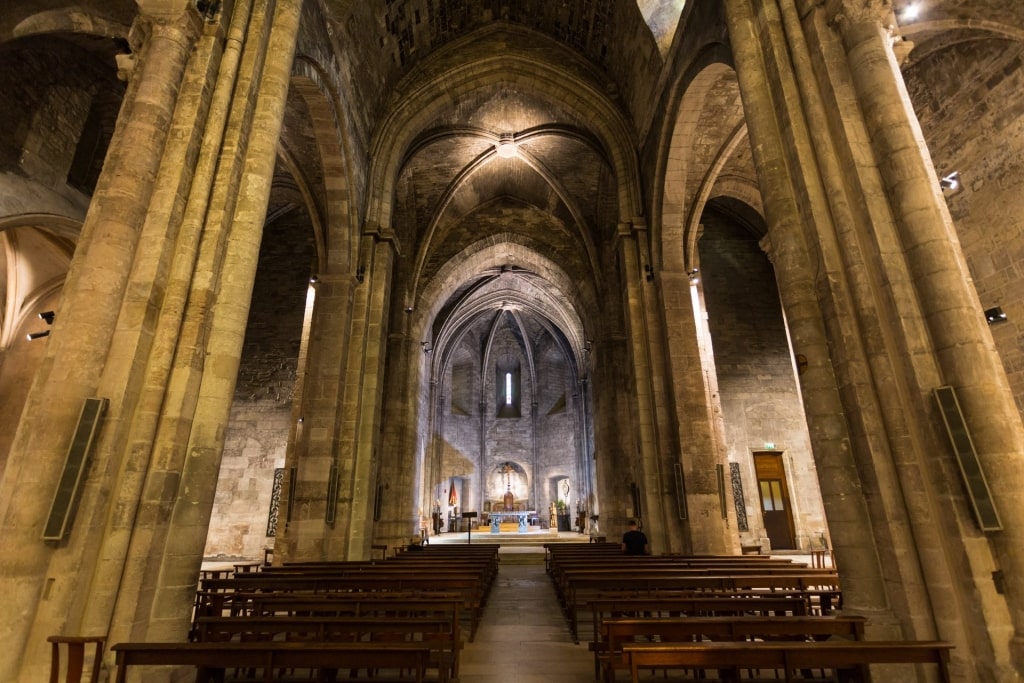
Saint-victor Abbey
Wander up a rise at the Vieux Port to arrive at the Saint-Victor Abbey, where the wives of many a Marseille fisherman have no doubt lit a candle.
This 3rd-century building—stark and clean in its fort-like construction—was named for the 14th-century Christian martyr, Victor of Marseille. At the time, legend had it that the remains of Victor lay beneath this holy place; however, it’s actually constructed on top of an ancient Greek necropolis which you can also visit, beside the abbey itself.
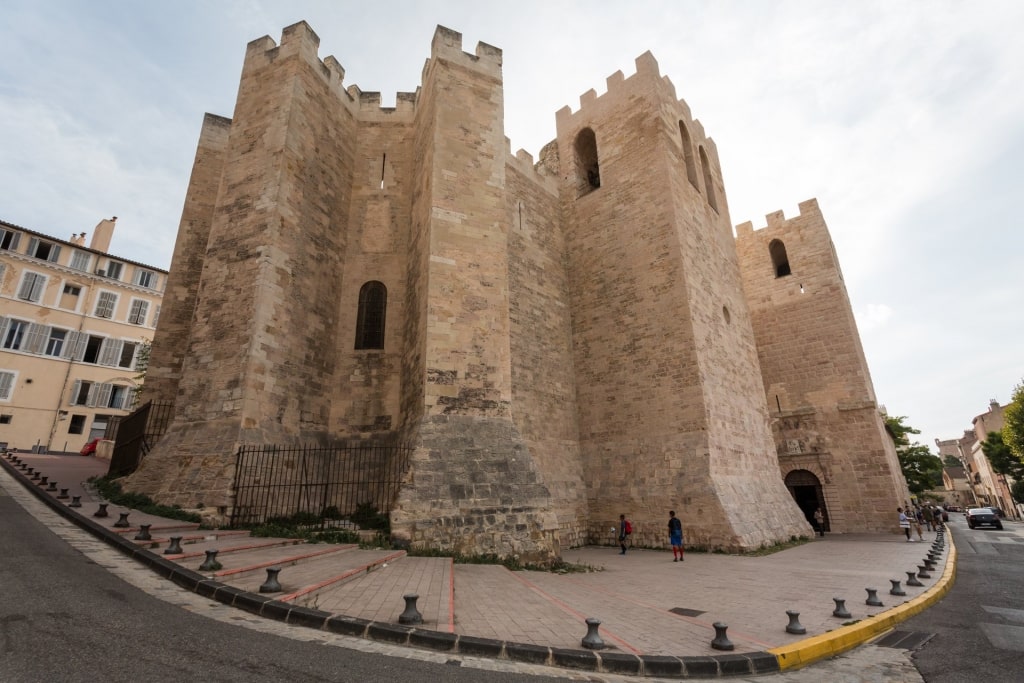
Saint-victor Abbey
The crucible of Christianity in the city, it’s a working Catholic church to this day and perhaps the best place for experiencing the true depth of Marseille’s history. Afterward, seek out the city’s traditional navettes, which are boat-shaped biscuits flavored with orange blossom often used during religious ceremonies.
6: Wander The Grounds Of Longchamp Palace
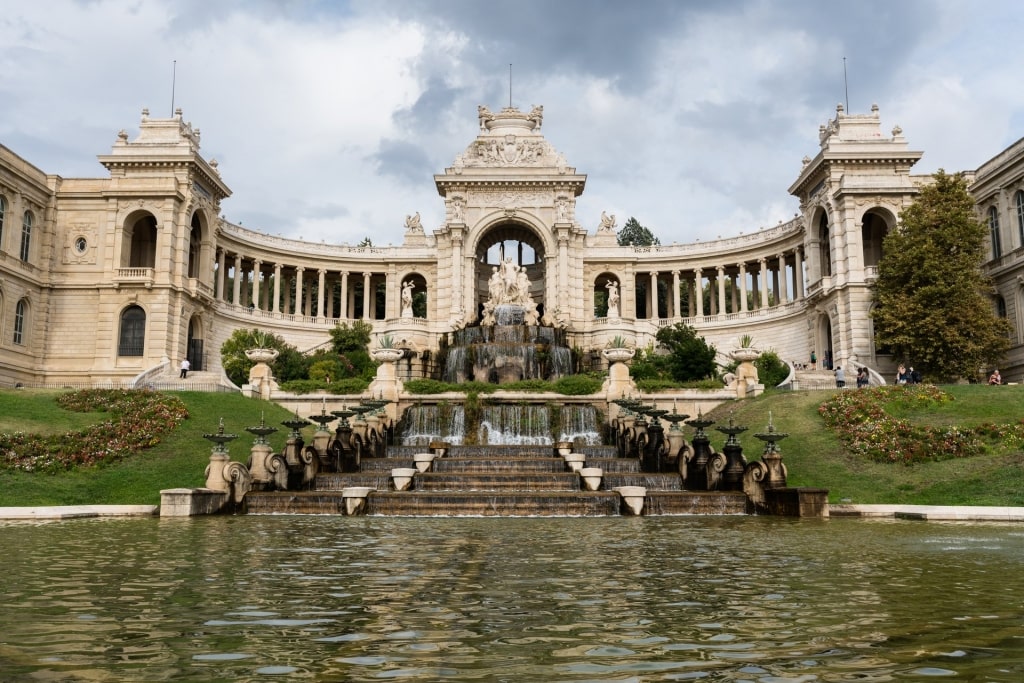
Longchamp Palace
Located in the city’s 4th arrondissement, Longchamp Palace (Palais de Longchamp) is home to Marseille’s oldest museum, the Musée des Beaux-Arts de Marseille. Its gallery is packed with artworks dating from the 16th century up to the present day from predominantly regional and Italian artists. You’ll also find the city’s excellent Natural History Museum inside the palace’s west wing.
Longchamp Palace is also well known for its park—a favorite with local families and one of the official Notable Gardens of France. The centerpiece is the grand 19th-century fountain known as the water castle. This was built to celebrate the Canal de Marseille’s completion—an essential part of securing a clean water supply for the city.
In another section of the park, you’ll also come across some exotic buildings that used to be part of a 19th-century zoo.
7: Stroll La Canebière
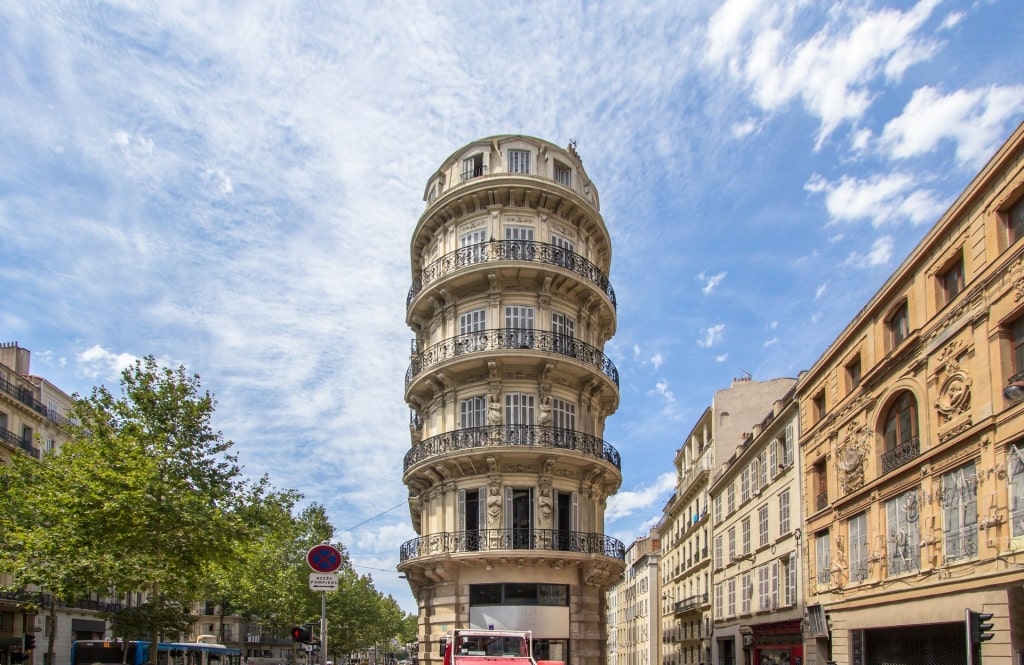
La Canebière
A grand avenue in the style that the French do so well, La Canebière is the chief commercial artery of the city’s historic center.
Also known as the Champs-Élyssés of Marseille, it opened in 1666 but it reached its zenith in the 18th century when it was a kilometer-long stretch of pomp and show. Wealthy merchants built elaborate townhouses here, their homes interspersed with ostentatious hotels. While these overt displays of wealth acted as edifices to their commercial acumen, the street name itself was dedicated to the humble ropemakers who used to work here.
The decorative facades that remain today are now the homes to shops and restaurants. A stroll along its leafy sidewalks is an essential thing to do in Marseille. You’ll see the elegant decay standing shoulder-to-shoulder with examples of handsome forward-looking regeneration.
Make it all the way to La Canebière’s conclusion, and you’ll be rewarded with arrival at the colorful Capucin neighborhood. With descriptions like “Aladdin’s Cave” and “the stomach of Marseille”, this North African area is famous for its markets bright with exotic spices and its stalls selling pomegranate molasses, halloumi, and practically every vegetable under the generous Provençal sun.
8: Explore The Atmospheric Le Panier Quarter
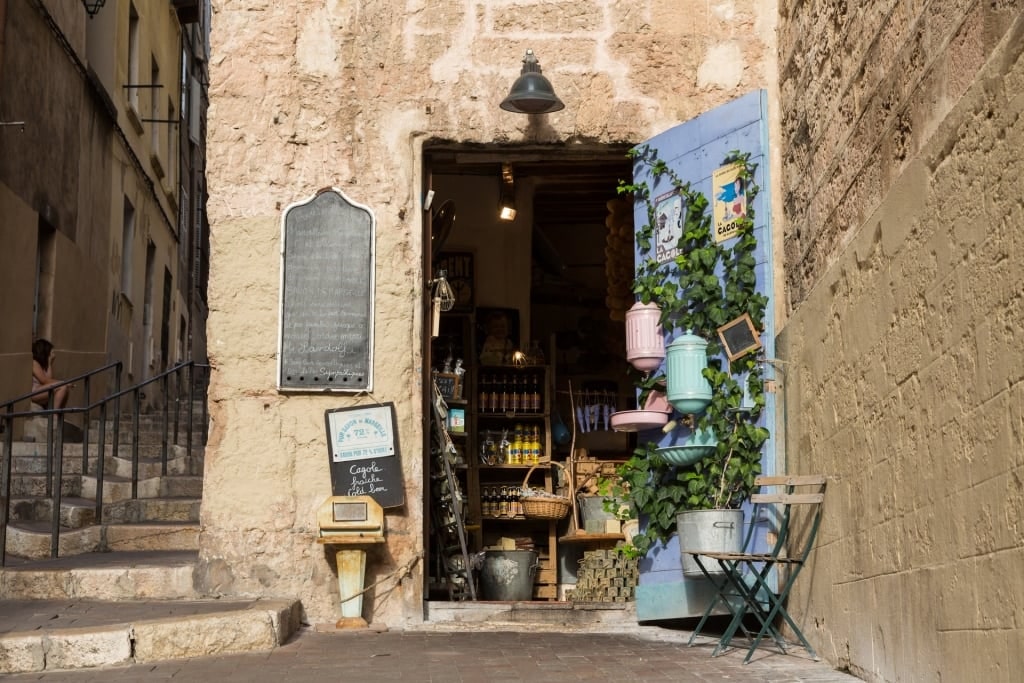
Le Panier
On a hill north of the Vieux Port, Le Panier (“the Basket”) is the city’s oldest district, dating back to 600 BC. Today, this charming maze of limestone alleys is being slowly gentrified, but its rich history and multi-ethnic make-up are fiercely protected by the city as well as Le Panier’s inhabitants.
For centuries, this higgledy-piggledy neighborhood of bright window boxes and stunning street art provided a home to impoverished immigrants. It served as a haven for Jews fleeing from Hitler and also acted as the headquarters of the Corsican Mafia.
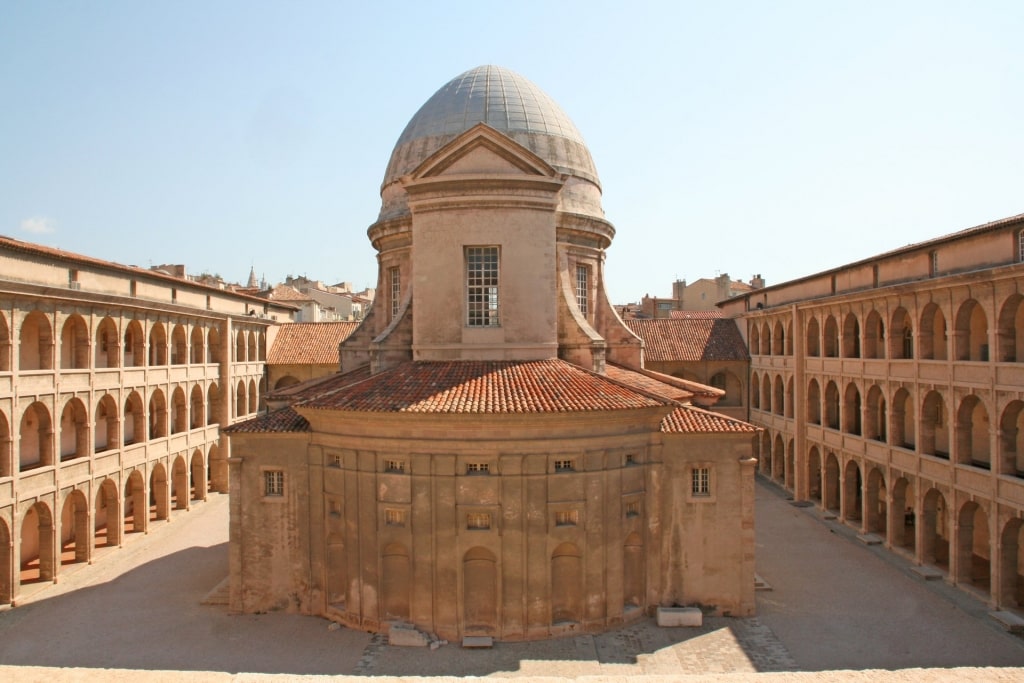
La Vieille Charité
Today, you’ll find fresh paint on the window shutters, gourmet shops offering squid ink ice cream, and some of the city’s finest street art. One of its landmark buildings is the 17th century La Vieille Charité. This handsome building, with its Pierre Puget-designed neoclassical chapel and arcaded courtyard, houses two museums: one concerned with archaeology and the other with contemporary art.
9: Lose Yourself In Aix-en-Provence’s Elegant Streets
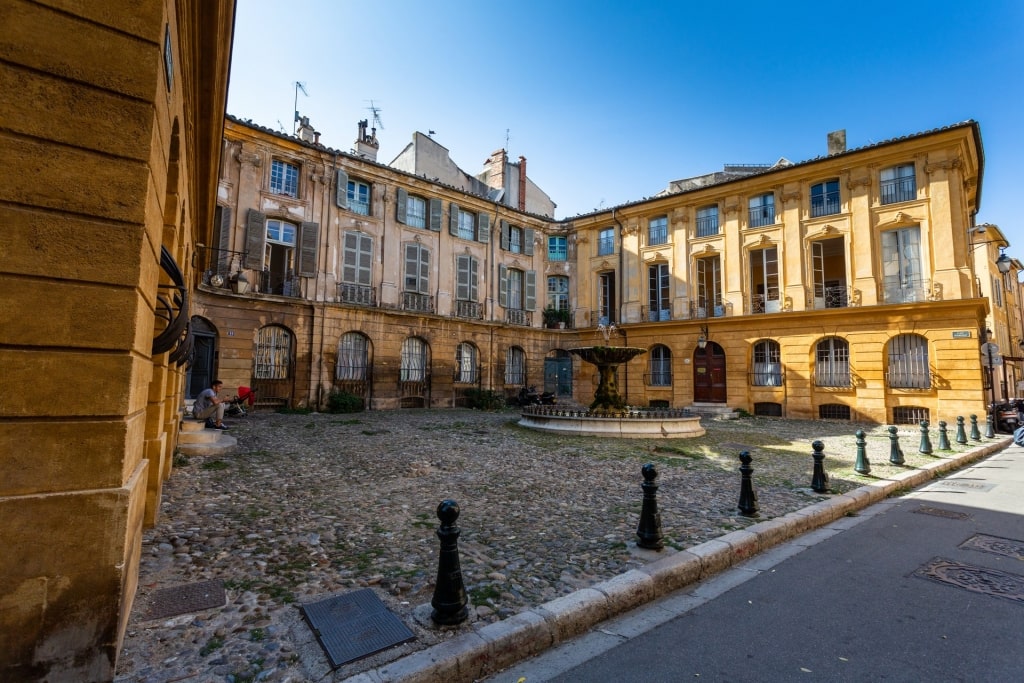
Aix-en-Provence
The rarified satellite of Marseille, Aix-en-Provence’s baroque mansions and ochre-washed streets feel removed from the urban hustle and bustle of its larger neighbor.
Famous as the home of 19th-century painter Paul Cézanne, Aix-en-Provence’s reputation as a center for artistry and intellectualism long predates the post-impressionist giant. The statue of Good King René stout beneath the towering plane trees of Cours Mirabeau enshrines the 15th-century origins of Aix-en-Provence’s lofty reputation—although the city’s students help these winding streets from ever feeling at all stuffy.
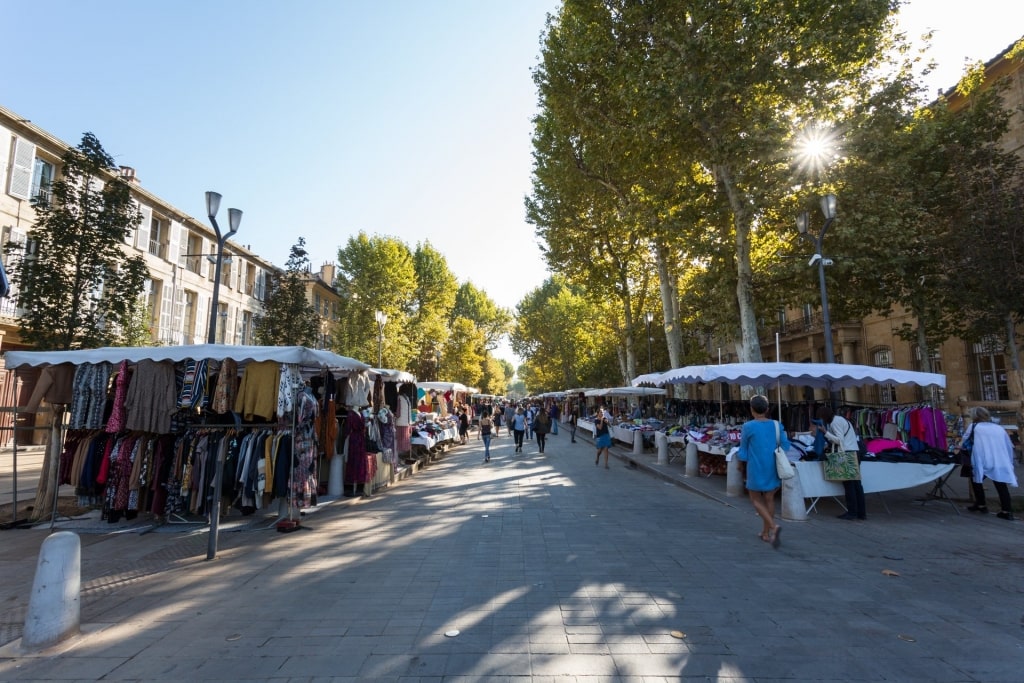
Cours Mirabeau
Stay on Cours Mirabeau, the heart of the city, for one of the more perfect examples of the French high street. Relax at one of the spilling cafe or bar terraces with a glass of Provençal rosé, or if you’re visiting on the right day, browse its buzzing grand market. Join a gourmet walking tour for a deep dive into the culinary heart of Provence and taste the city’s macarons, local cheeses, and sweet honey flavored by the region’s iconic lavender.
The turbulent Mistral winds are also gentle on Aix-en-Provence, perhaps adding to the overall sense of serenity found in the city’s picturesque squares and gardens. A favorite of Cézanne’s was Le Terrain des Peintres (Painters’ Park), which has excellent views of his cubist muse, Mount Sainte-Victoire.
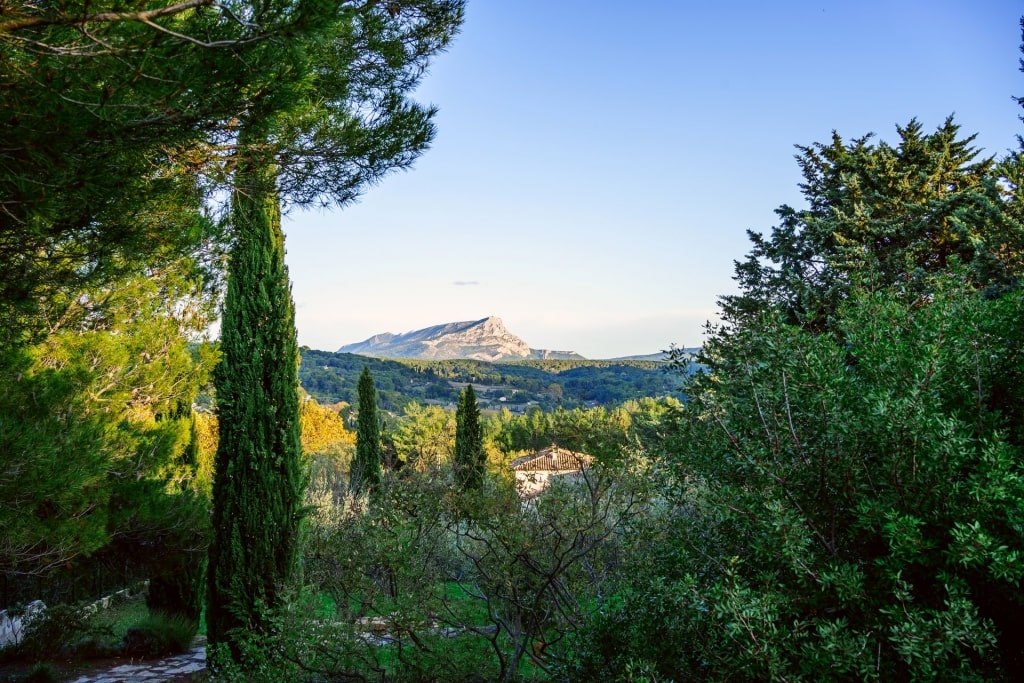
Aix-en-Provence
If you’d like a more direct encounter, Cézanne’s studio is perhaps the city’s most intimate museum. It’s left in a slightly chaotic, lived-in state as if he’s just stepped out for more paint.
10: Taste Olive Oil At Arles
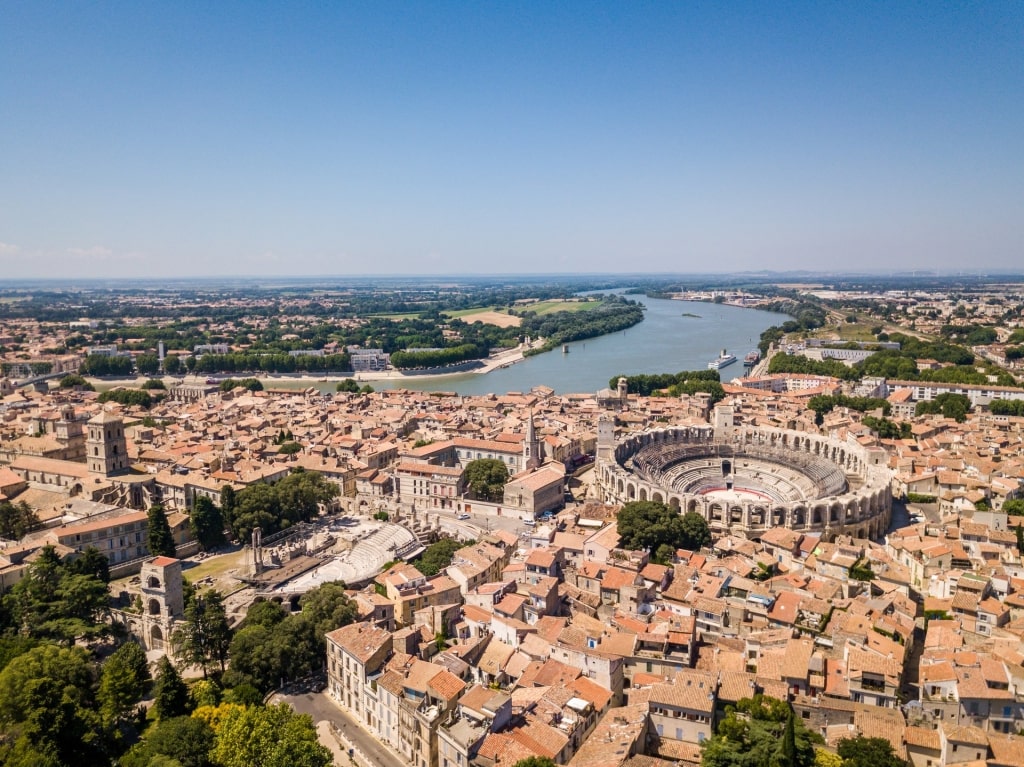
Arles
Seen as the principal town of the enchanting Camargue region, Arles makes for a wonderful day trip when visiting Marseille.
About an hour’s drive west, this historic city is almost an outdoor museum in itself, with a fabulous collection of UNESCO-listed Roman and Middle Age buildings for you to wander among. Most striking is the Roman arena modeled after the Coliseum in Rome. It’s still in use today as one of the chief venues—alongside nearby Nîmes—for the Camargue’s non-lethal variety of bullfighting.
Beyond the cool crypts and sun-baked bell towers, Arles also has a rich art heritage. Vincent Van Gogh stayed here for a year in the late 1800s. The town was the inspiration for a number of his most well-known paintings including ‘Cafe Terrace at Night’.
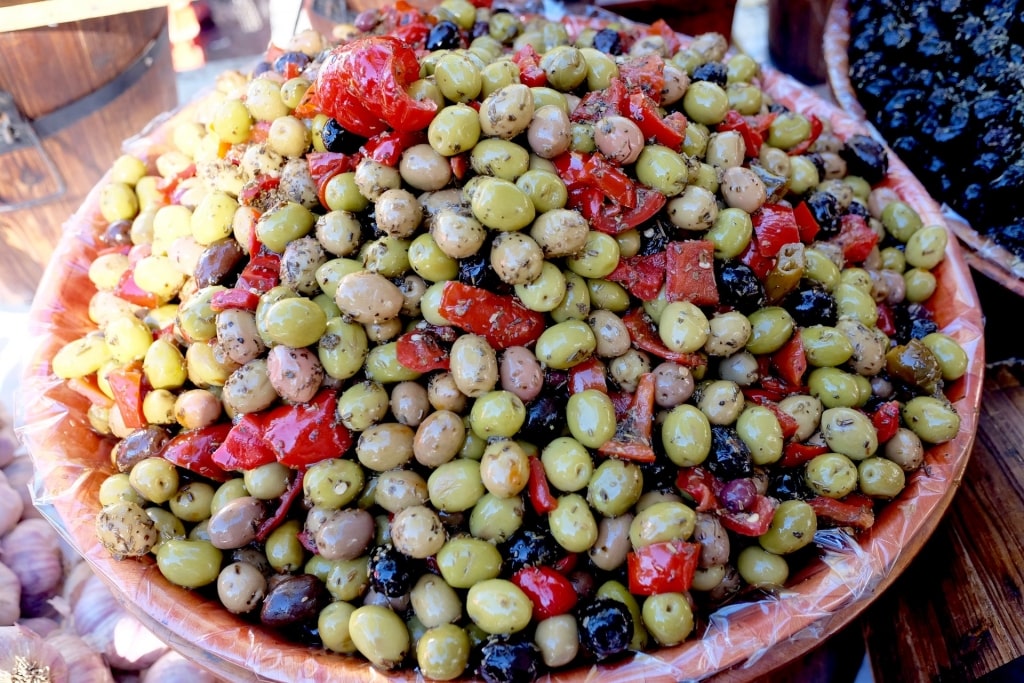
Arles
However, as the proliferation of olive trees will testify, the production of this essential cooking element has long been a key part of life in the area. This is best discovered at the medieval Mill of St. Jean in the nearby village of Fontvieille. Here, four generations of the Sourdon family have extracted light and flavorful oil from their aged groves growing on land where olive oil was made in Roman times.
You can enjoy a tour of their mill, set amid the dreamy Baux de Provence landscape, before settling into a tasting of their products alongside some local delicacies. Afterward, tour the dramatic scenes of the Alpilles Range and take in the breathtaking views of picturesque Les Baux-de-Provence village.
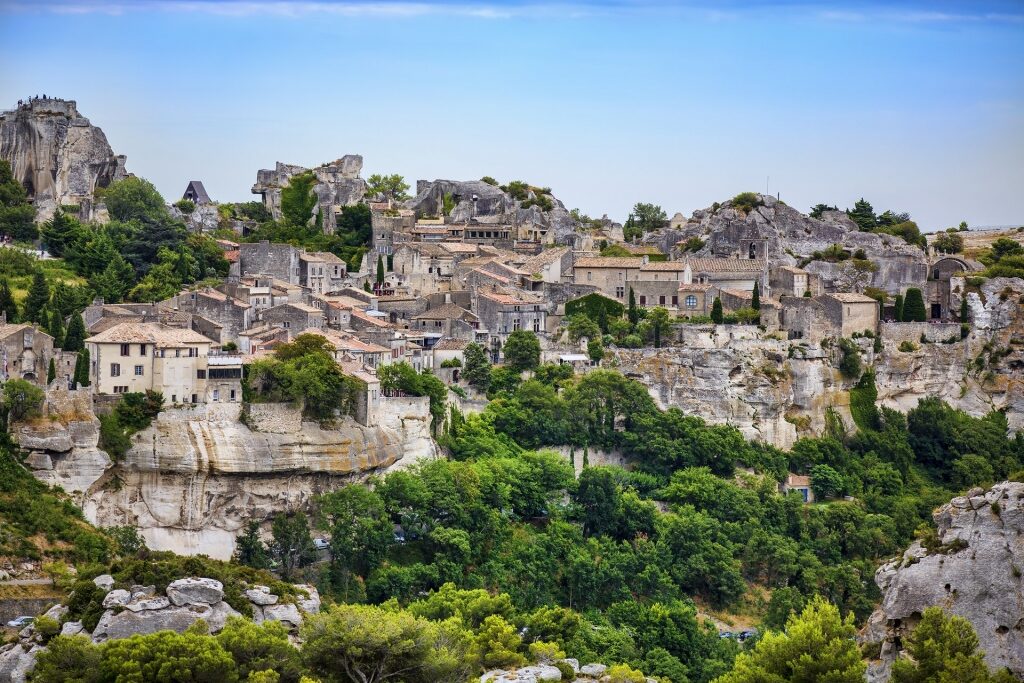
Baux de Provence
11: See La Cité Radieuse
A UNESCO World Heritage Site, La Cité Radieuse is Le Corbusier’s first Unité d’Habitation and the standard-bearer for Brutalist architecture worldwide.
This experiment of communal living, built between 1947 and 1952, was imagined by the Swiss architect as a neighborhood stacked vertically on itself. Besides its 337 apartments, the building also includes two high streets, a rooftop terrace, and a hotel.
While still a sought-after place to live, its interior streets are open to curious visitors. There is a guided tour available which offers access to a restored duplex apartment and its brightly painted balcony.
12: Savor Some Bouillabaisse
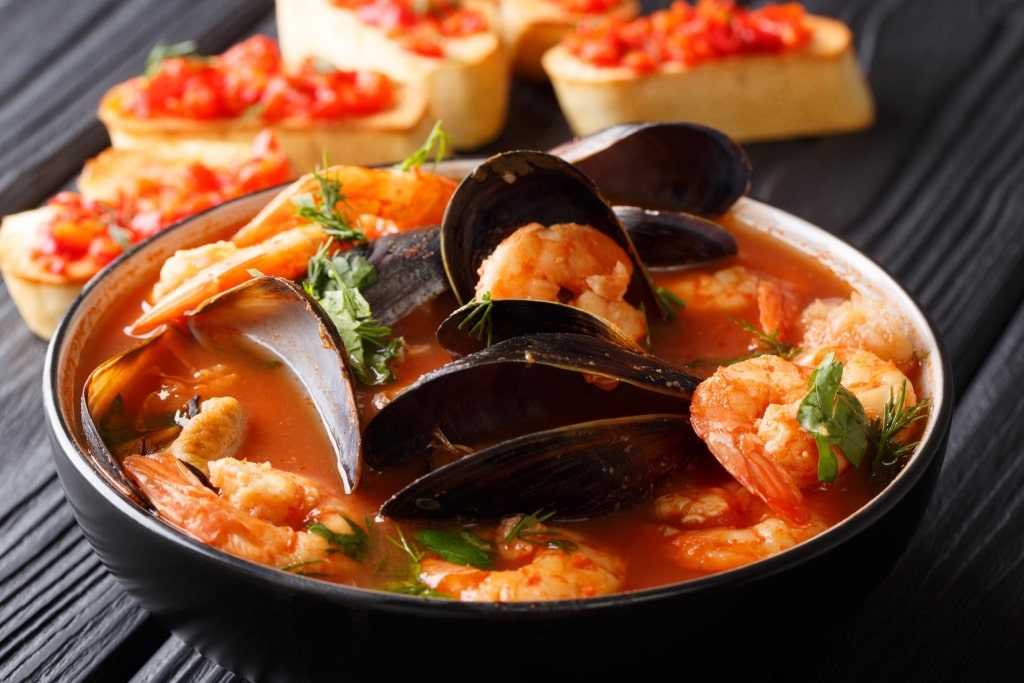
Bouillabaisse
While all of the things to do in Marseille included in this article can you give you a flavor of the city, only Bouillabaisse delivers a literal taste of this city’s complex culture. This Provencal dish is of epic proportions and equally epic provenance, with its roots in the cuisine of the city’s ancient Greek founders. However, its modern incarnation owes more to the latter-day fishermen of the city who created it out of the parts of the catch they found difficult to sell.
Don’t let that put you off. Traditional bouillabaisse, done well, is a meal to savor. A broth infused with saffron has slices of baguette floated in it, each dressed with spicy rouille mayonnaise. Added to this is a platter of tender cooked fish that must, at a minimum, include red rascasse, conger eel, and gurnard.
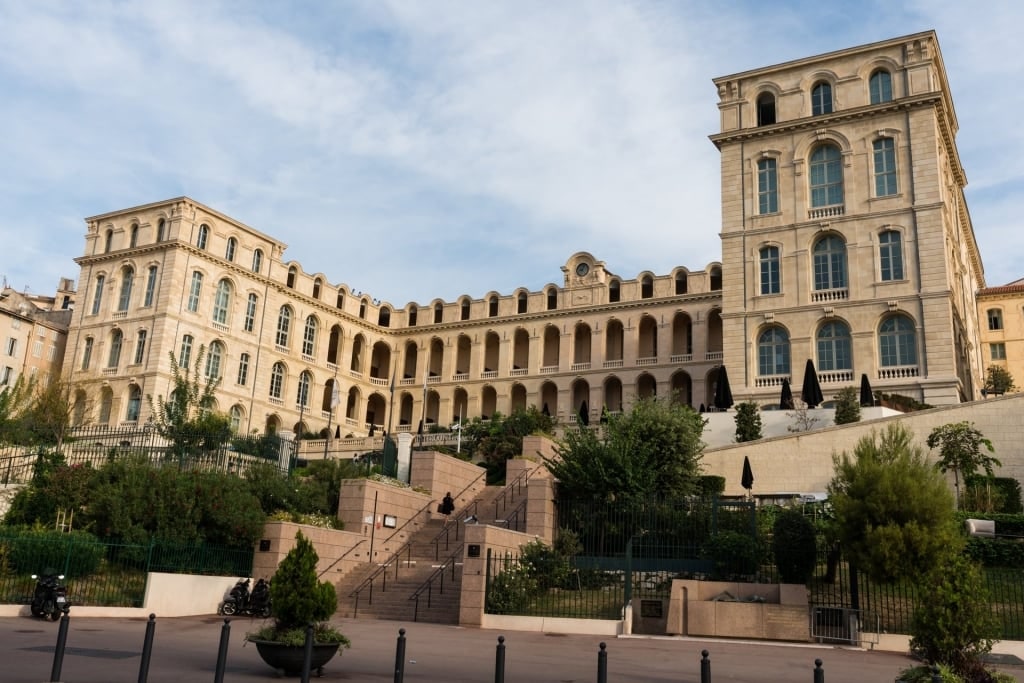
Hotel Dieu
Usually made for five people or more to share, the best restaurants to eat bouillabaisse include Chez Michel, Le Petit Nice (the seat of the city’s culinary kingpin, three Michelin-starred Gérald Passédat), or Chez Fonfon, located in the atmospheric cove of Vallon des Auffes. For a modern interpretation, the Vieux Port-based Hotel Dieu offers a signature bouillabaisse milkshake at its in-house restaurant, Les Fenêtres.
13: Cool Off With A Cloudy Glass Of Pastis

Pastis
With Marseille’s attractions including 300 days of sun, the locals have long turned to a cloudy glass of pastis as their go-to for cooling off. The aniseed flavor of this waxy yellow liqueur is imparted by spices including star anise, fennel, and dried licorice root. Pastis is always served with water to allow the drinker to dilute to their tastes—staying hydrated is an important thing to do in Marseille.
You’ll find it behind every bar in the city, but this drink is best enjoyed while people-watching near the sparkling waterside at the Vieux Port. Of the three Marseillaise pastis brands available, choose Ricard in honor of the local son who commercialized the aniseed spirit. Pair it with some panisse—soft wedges of chickpea with a papery, salty batter—and enjoy the city’s passing parade.
Discover the extraordinary history and culture of the city on a cruise to Marseille. Browse cruise itineraries online and start planning your next unforgettable vacation.
